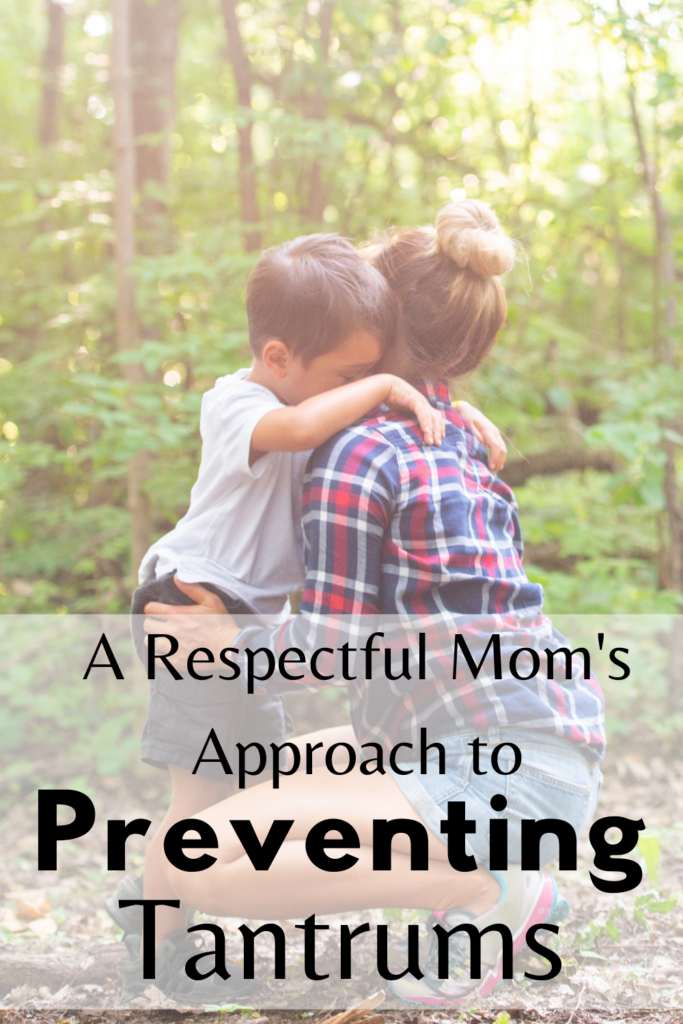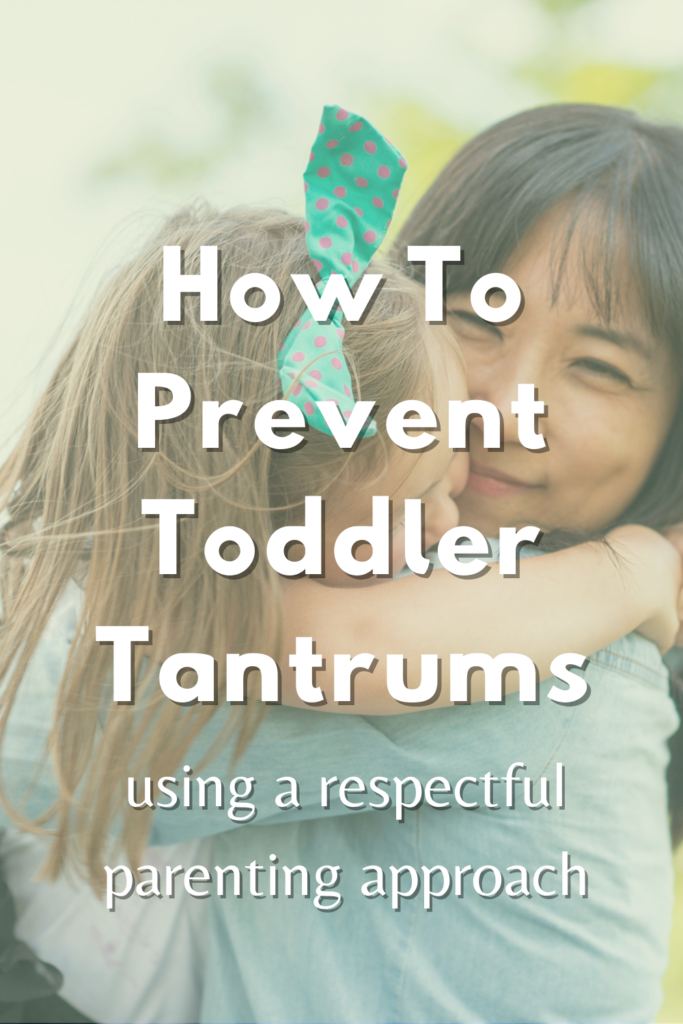
I’ll be honest and upfront with you. The title of this article, “how to prevent toddler tantrums”, is slightly misleading of my intentions with this article.
Don’t get me wrong, in following these steps I’ve listed below, I have significantly reduced the number of frustrations and bursts of emotion that my toddler has throughout the day.
However, what most people think of when they read “how to prevent toddler tantrums” is probably not the angle I’m going to take in this article. Let me briefly explain why.
I do not think Tantrums are something that should be stopped or ended or even prevented.
Tantrums almost always have a root cause.
Tantrums can happen when there has been a buildup of emotions and feelings in a child.
Or they can happen as a result of a child feeling confused and as if they have no control over a situation. (child is interrupted from an activity they were enjoying, picked up and carried away with no explanation, etc)
Tantrums can occur as a result of their needs not being met….maybe they’re hungry or tired.
Or they can happen when a child is repeatedly frustrated because they do not feel seen or heard.
Tantrums can happen when a child does not feel connected to their caregiver.
When reading the above list, you can see that there are many ways in which we can learn how to prevent a toddler tantrum from happening simply by respecting our child and listening to their thoughts – just like we would an adult.
But I never want to allude that we should prevent tantrums by telling our children to not feel their emotions. Never. Children should always be allowed to express how they’re feeling, and always feel safe doing so, knowing that we will not judge them for it.
In following the basic principles for relating to children respectfully that I outline below, tantrums will naturally happen less.
Will they still happen? Absolutely, and that is a good thing.
But when we treat children with the same respect that we would like to be treated with, there will naturally be fewer frustrations, we will be attuned to our child’s needs, and our child will feel heard, seen, and connected to us.
RELATED: Stop Distracting Your Toddler When They’re Upset and What To Do Instead
How To Prevent Toddler Tantrums Respectfully
Prioritize Undistracted Quality Time With Them
Toddlers are much more likely to feel safe, loved, and connected to us when they have had quality, connection time with us. “Connection time” is time where they are the center of our focus, our main priority, and there are no other distractions.
I think sometimes as moms, especially stay at home moms who are with our children all day long, it’s easy for us to feel like we have spent a lot of time with our children because we are in their presence all day long.
However for our kids, just being with us doesn’t mean they feel close and connected to us.
In my own life, I have noticed that when I start out my morning by prioritizing “connection time” with my daughter, the rest of our day goes way more smoothly than if we miss out on that time.
In the morning, I leave my phone on airplane mode and head downstairs with my daughter to make breakfast. She helps me peel her orange, she helps me crack the eggs, and we eat our eggs together. We make lots of eye contact, we laugh together, and we cook together.
When we are done eating, we usually go to the couch to snuggle and read books together. I try to dedicate 30 minutes of playtime or reading time where she is my only priority. I have no distractions during this time, I’m not trying to clean or check my phone or read my own book – connecting with her is my only priority during this time.
After 30 minutes or so, I let her know that I’m going to clean up the kitchen. Usually she chooses to keep playing but sometimes she wants to help me clean the kitchen. After I clean up, we do chores together and pick up around the house until her naptime in the late morning.
I try to do this special connection time again in the afternoon.
I find that my daughter is much more flexible, calm, and has better independent play when we prioritize this “connection time” together.
Toddlers don’t know how to express that they don’t feel heard, seen or connected to you, but lack of these can lead to their world feeling out of control and scary.
Keep their physical needs met
Have you ever felt “hangry”? That slow irritation and snappy attitude that happens when you haven’t eaten in a while and your blood sugar is very low? I know I have!
Toddlers experience the same thing, the difference is that they often cannot recognize that they are hungry until they have hit the “hangry” stage.
And most parents know that babies and toddlers get frustrated easier when they’ve skipped their nap or slept poorly the night before.
So a simple way to help prevent toddler tantrums and meltdowns, is to make sure that their basic physical needs have been met. Everyone feels better with a snack right?!
Spend time outside
Did you know that sunshine is proven to help increase happiness and make us feel calm and alert?
I have found that nature is almost always a sure way to help my daughter (and myself) feel happy, calm, and inspired. We try to get outside every day, no matter the weather – nature is healing to our bodies and our spirits.
Click here to read some ideas for exploring nature with young toddlers!
Slowww Down
If there is one thing I have found to be the “magic charm” for avoiding tantrums out in public, it’s slowing down.
Young children do not process things as fast as we do – their brains are still growing and developing, and they are still learning language skills. It’s so easy for them to get overwhelmed when they don’t understand what is going on.
I see so many parents rushing their children on to new things without stopping to explain what’s happening and why. I’ll give you an example.
In the checkout line, a child is playing with a little toy on the shelf by the cash register. When it’s time to go, the mother might say, “Time to go honey!”, take the toy out of the child’s hand, pick them up, and walk away. The child will probably feel confused on why the toy he was enjoying was just taken out of his hands, and where he is being rushed off to.
In this situation, simply taking the time to slow down, get on the child’s level, explaining that you are ready to leave now and asking them to put the toy away, and giving them a moment to process, are some ways that are much more respectful to give the child an awareness of what’s happening and when.
I try to remember to slow down whenever I can around my daughter. Anytime I ask her to do something, I take it very slowly and explain why. Obviously this isn’t always possible, but the vast majority of times, it is possible.
Most children are naturally helpful and want to please their parents, especially when this is what they have seen modeled to them. Making a conscious effort to slow down when interacting with a child helps them feel understood, respected, and secure, and in return helps prevent toddler tantrums.
Don’t micromanage (or correct) them during their playtime
Did you know that children’s brains grow and they learn new skills when they are completely focused and in a “flow state” while playing with something? Even if it’s something that we would deem “not a toy”, like a clothespin or a rubber band.
Have you ever watched a child get into their “flow state”? Maybe the child is supposed to be painting, but instead they are concentrating on removing the lid from the paint bottle and twisting it back on. This is their “flow state”. This is when children problem solve and learn.
It can be so tempting to lean over and “help” them, or say, “Oh here, this is the right way to do it”, but it’s not actually helpful long term to our children’s development. What’s more helpful is allowing them to problem solve and come up with solutions on their own.
Correction or micromanagement during playtime can also lead to more frustrations and built up resentment in your toddler. So practically speaking, try allowing your child to take the lead in their own play and begin watching them come up with creative solutions on their own that may surprise you!
Allow them to express their feelings
When there is a buildup of emotion or a frustration that comes bursting out of our children, it’s absolutely necessary for us to allow them to express and feel that emotion.
It’s natural for parents to want to help our children feel better when they’re upset. Generally our culture and society are uncomfortable with crying, which is why we say “shhh” to newborn babies when they fuss. Because of this uncomfortable feeling that comes with crying or showing emotion, it can feel natural to try to distract your child from their feelings.
“Aw it’s okay, here have a snack to help you feel better.”
“Oh don’t cry, here let’s keep playing.”
“You’re okay, here, let’s play chase. Ready? I’m gonna get you!” *tickles child*
While distraction can be a temporary solution to the tantrum, it usually leads to children having an even bigger meltdown later, plus it teaches them that when you’re feeling sad, you should distract yourself with ____ (any coping method) in order to not FEEL your emotions.
In order to raise emotionally aware and emotionally healthy children, it’s always better to allow them to fully express their feelings.
All feelings are allowed.
Be the safe space that your child can always count on when they are feeling overwhelmed.
Be the calm, confident leader they need when it comes to boundaries
When placing a boundary for our children, it is vital that we remain the calm, confident leader that our children need in order to help them follow the boundary.
Toddlers do not have impulse control. The prefrontal cortex of their brain is not fully developed, and they often do not have the capacity to control themselves.
When you set a boundary, remember that their brains don’t always know how to follow the boundary. It’s not their fault, and it is important to have age appropriate expectations for what your children can and can’t do.
Remember that you are here to help your child follow the boundary – you’re on their team.
Placing unnecessary boundaries can lead to frustration from your child, but not having any boundaries can also lead to frustration because the child doesn’t feel safe or they may feel out of control.
This middle ground of placing appropriate boundaries regarding your child’s safety and the safety of others, combined with remaining calm, confident, and kind towards our children, can help them feel secure in your care, knowing that you are their leader and have their best interest at heart – even if they protest the boundary sometimes.
RELATED: What is Intuitive Parenting?
So in conclusion – can you prevent toddler tantrums?
Yes and No.
The goal should not be to prevent your toddler from expressing their feelings and emotions.
However, there are many actionable steps you can take to help your toddler get frustrated less, feel more understood, and feel secure that their needs are being met. When toddlers feel this way, they are bound to get less frustrated and have less bursts of emotion.
And always remember, you are doing an amazing job raising your child.
Victoria


